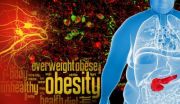(Press-News.org) For many animals, making sense of the clutter of sensory stimuli is often a matter or literal life or death.
Exactly how animals separate objects of interest, such as food sources or the scent of predators, from background information, however, remains largely unknown. Even the extent to which animals can make such distinctions, and how differences between scents might affect the process were largely a mystery – until now.
A new study, described in an August 3 paper in Nature Neuroscience, a team of researchers led by Venkatesh Murthy, Professor of Molecular and Cellular Biology, showed that while mice can be trained to detect specific odorants embedded in random mixtures, their performance drops steadily with increasing background components. The team included Dan Rokni, Vikrant Kapoor and Vivian Hemmelder, all from Harvard University.
"There is a continuous stream of information constantly arriving at our senses, coming from many different sources," Murthy said. "The classic example would be a cocktail party – though it may be noisy, and there may be many people talking, we are able to focus our attention on one person, while ignoring the background noise.
"Is the same also true for smells?" he continued. "We are bombarded with many smells all jumbled up. Can we pick out one smell "object" – the smell of jasmine, for example, amidst a riot of other smells? Our experience tells us indeed we can, but how do we pick out the ones that we need to pay attention to, and what are the limitations?"
To find answers to those, and other, questions, Murthy and colleagues turned to mice.
After training mice to detect specific scents, researchers presented the animals with a combination of smells – sometimes including the "target" scent, sometimes not. Though previous studies had suggested animals are poor at individual smells, and instead perceived the mixture as a single smell, their findings showed that mice were able to identify when a target scent was present with 85 percent accuracy or better.
"Although the mice do well overall, they perform progressively poorer when the number of background odors increases," Murthy explained.
Understanding why, however, meant first overcoming a problem particular to olfaction.
While the relationship between visual stimuli is relatively easy to understand – differences in color can be easily described as differences in the wavelength of light – no such system exists to describe how two odors relate to each other. Instead, the researchers sought to describe scents according to how they activated neurons in the brain.
Using fluorescent proteins, they created images that show how each of 14 different odors stimulated neurons in the olfactory bulb. What they found, Murthy said, was that the ability of mice to identify a particular smell was markedly diminished if background smells activated the same neurons as the target odor.
"Each odor gives rise to a particular spatial pattern of neural responses," Murthy said. "When the spatial pattern of the background odors overlapped with the target odor, the mice did much more poorly at detecting the target. Therefore, the difficulty of picking out a particular smell among a jumble of other odors, depends on how much the background interferes with your target smell. So, we were able to give a neural explanation for how well you can solve the cocktail party problem.
"This study is interesting because it first shows that smells are not always perceived as one whole object – they can be broken down into their pieces," he added. "This is perhaps not a surprise – there are in fact coffee or wine specialists that can detect faint whiffs of particular elements within the complex mixture of flavors in each coffee or wine. But by doing these studies in mice, we can now get a better understanding of how the brain does this. One can also imagine that understanding how this is done may also allow us to build artificial olfactory systems that can detect specific chemicals in the air that are buried amidst a plethora of other odors."
INFORMATION:
Making sense of scents
Study shows that mice can identify specific odors amid complex olfactory environments
2014-08-03
ELSE PRESS RELEASES FROM THIS DATE:
Clues to curbing obesity found in neuronal 'sweet spot'
2014-08-02
New Haven, Conn. -- Preventing weight gain, obesity, and ultimately diabetes could be as simple as keeping a nuclear receptor from being activated in a small part of the brain, according to a new study by Yale School of Medicine researchers.
Published in the Aug. 1 issue of The Journal of Clinical Investigation (JCI), the study showed that when the researchers blocked the effects of the nuclear receptor PPARgamma in a small number of brain cells in mice, the animals ate less and became resistant to a high-fat diet.
“These animals ate fat and sugar, and did not gain ...
Pepper and halt: Spicy chemical may inhibit gut tumors
2014-08-02
Researchers at the University of California, San Diego School of Medicine report that dietary capsaicin – the active ingredient in chili peppers – produces chronic activation of a receptor on cells lining the intestines of mice, triggering a reaction that ultimately reduces the risk of colorectal tumors.
The findings are published in the August 1, 2014 issue of The Journal of Clinical Investigation.
The receptor or ion channel, called TRPV1, was originally discovered in sensory neurons, where it acts as a sentinel for heat, acidity and spicy chemicals in the environment. ...
Study reveals one reason brain tumors are more common in men
2014-08-02
New research at Washington University School of Medicine in St. Louis helps explain why brain tumors occur more often in males and frequently are more harmful than similar tumors in females. For example, glioblastomas, the most common malignant brain tumors, are diagnosed twice as often in males, who suffer greater cognitive impairments than females and do not survive as long.
The researchers found that retinoblastoma protein (RB), a protein known to reduce cancer risk, is significantly less active in male brain cells than in female brain cells.
The study appears Aug. ...
Understanding how neurons regulate metabolism in response to a high-fat diet
2014-08-02
The brain plays a central role in regulating appetite and whole-body metabolism. A protein known as PPARγ is important in the brain's control of food intake and body weight, but the identity of the neurons regulating this process has been unclear. A new study in the Journal of Clinical Investigation demonstrates that PPARγ activity in a type of neuron known as pro-opiomelanocortin (POMC) neurons is critical in mediating the response to high-fat diet. Sabrina Diano and colleagues at Yale University School of Medicine found that mice lacking PPARγ specifically ...
New research characterizes in-flight pediatric deaths
2014-08-01
CLEVELAND, Ohio – In a first-of-its-kind study, researchers at University Hospitals Rainbow Babies & Children's Hospital (UH Rainbow) found that lap infants may be at greater risk for death on a commercial airline flight. The study analyzed pediatric medical emergencies on flights worldwide between January 2010 and June 2013 and found 90 percent of deaths occurred in children under the age of 2.
The study was conducted in partnership with MedAire to characterize the rare event of an in-flight pediatric fatality onboard commercial airline flights worldwide. Through a ...
Best evidence yet for coronal heating theory detected by NASA sounding rocket
2014-08-01
VIDEO:
NASA's EUNIS sounding rocket mission spotted evidence to explain why the sun's atmosphere is so much hotter than its surface.
Click here for more information.
Scientists have recently gathered some of the strongest evidence to date to explain what makes the sun's outer atmosphere so much hotter than its surface. The new observations of the small-scale extremely hot temperatures are consistent with only one current theory: something called nanoflares – a constant ...
Scientists solve 2,000-year-old mystery of the binding media in China's polychrome Terracotta Army
2014-08-01
Even as he conquered rival kingdoms to create the first united Chinese empire in 221 B.C., China's First Emperor Qin Shihuang ordered the building of a glorious underground palace complex, mirroring his imperial capital near present-day Xi'an, that would last for an eternity.
To protect his underworld palaces, the First Emperor issued instructions that his imperial guard be replicated, down to the finest details, in red-brown terracotta clay, poised to do battle. Thousands of these imperial guards were initially discovered in 1974; some contained patches of pigment that ...
Advances in assisted reproduction create more options and new legal issues for LGBT couples
2014-08-01
New Rochelle, NY, August 1, 2014—Lesbian, gay, bisexual, and transgender individuals who want to conceive a child may face the same problems as some of their heterosexual and cisgendered peers, such as reduced fertility, but in addition they often face additional physiological and legal challenges to become parents. A comprehensive review of the most recent advances in assisted reproduction options is presented in the article "LGBT Assisted Reproduction: Current Practice and Future Possibilities," published in LGBT Health, a peer-reviewed journal from Mary Ann Liebert, ...
On-chip topological light
2014-08-01
Topological transport of light is the photonic analog of topological electron flow in certain semiconductors. In the electron case, the current flows around the edge of the material but not through the bulk. It is "topological" in that even if electrons encounter impurities in the material the electrons will continue to flow without losing energy.
In the photonic equivalent, light flows not through and around a regular material but in a meta-material consisting of an array of tiny glass loops fabricated on a silicon substrate. If the loops are engineered just right, ...
Expressive writing may help breast cancer survivors
2014-08-01
Writing down fears, emotions and the benefits of a cancer diagnosis may improve health outcomes for Asian-American breast cancer survivors, according to a study conducted by a researcher at the University of Houston (UH).
"The key to developing an expressive writing intervention is the writing instruction. Otherwise, writing is just like a journal recording facts and events. Writing a journal can be therapeutic, but oftentimes we don't get the empirical evidence to determine whether it's effective or not," said Qian Lu, assistant professor and director of the Culture ...
LAST 30 PRESS RELEASES:
Scalable and healable gradient textiles for multi‑scenario radiative cooling via bicomponent blow spinning
Research shows informed traders never let a good climate crisis go to waste
Intelligent XGBoost framework enhances asphalt pavement skid resistance assessment
Dual-function biomaterials for postoperative osteosarcoma: Tumor suppression and bone regeneration
New framework reveals where transport emissions concentrate in Singapore
NTP-enhanced lattice oxygen activation in Ce-Co catalysts for low-temperature soot combustion
Synergistic interface engineering in Cu-Zn-Ce catalysts for efficient CO2 hydrogenation to methanol
COVID-19 leaves a lasting mark on the human brain
Scientists use ultrasound to soften and treat cancer tumors without damaging healthy tissue
Community swimming program for Black youth boosts skills, sense of belonging, study finds
Specific depressive symptoms in midlife linked to increased dementia risk
An ‘illuminating’ design sheds light on cholesterol
Who is more likely to get long COVID?
Study showcases resilience and rapid growth of “living rocks”
Naval Research Lab diver earns Office of Naval Research 2025 Sailor of the Year
New Mayo-led study establishes practical definition for rapidly progressive dementia
Fossil fuel industry’s “climate false solutions” reinforce its power and aggravate environmental injustice
Researchers reveal bias in a widely used measure of algorithm performance
Alcohol causes cancer. A study from IOCB Prague confirms damage to DNA and shows how cells defend against it
Hidden viruses in wastewater treatment may shape public health risks, study finds
Unlock the power of nature: how biomass can transform climate mitigation
Biochar reshapes hidden soil microbes that capture carbon dioxide in farmland
Reducing saturated fat intake shows mortality benefit, but only in high-risk individuals
Manta rays create mobile ecosystems, study finds
Study: Mixed results in using lipoic acid to treat progressive multiple sclerosis
Norbert Holtkamp appointed director of Fermi National Accelerator Laboratory
New agentic AI platform accelerates advanced optics design
Biologists discover neurons use physical signals — not electricity — to stabilize communication
Researchers discover that a hormone can access the brain by hitchhiking
University of Oklahoma researcher awarded funding to pursue AI-powered material design
[Press-News.org] Making sense of scentsStudy shows that mice can identify specific odors amid complex olfactory environments






